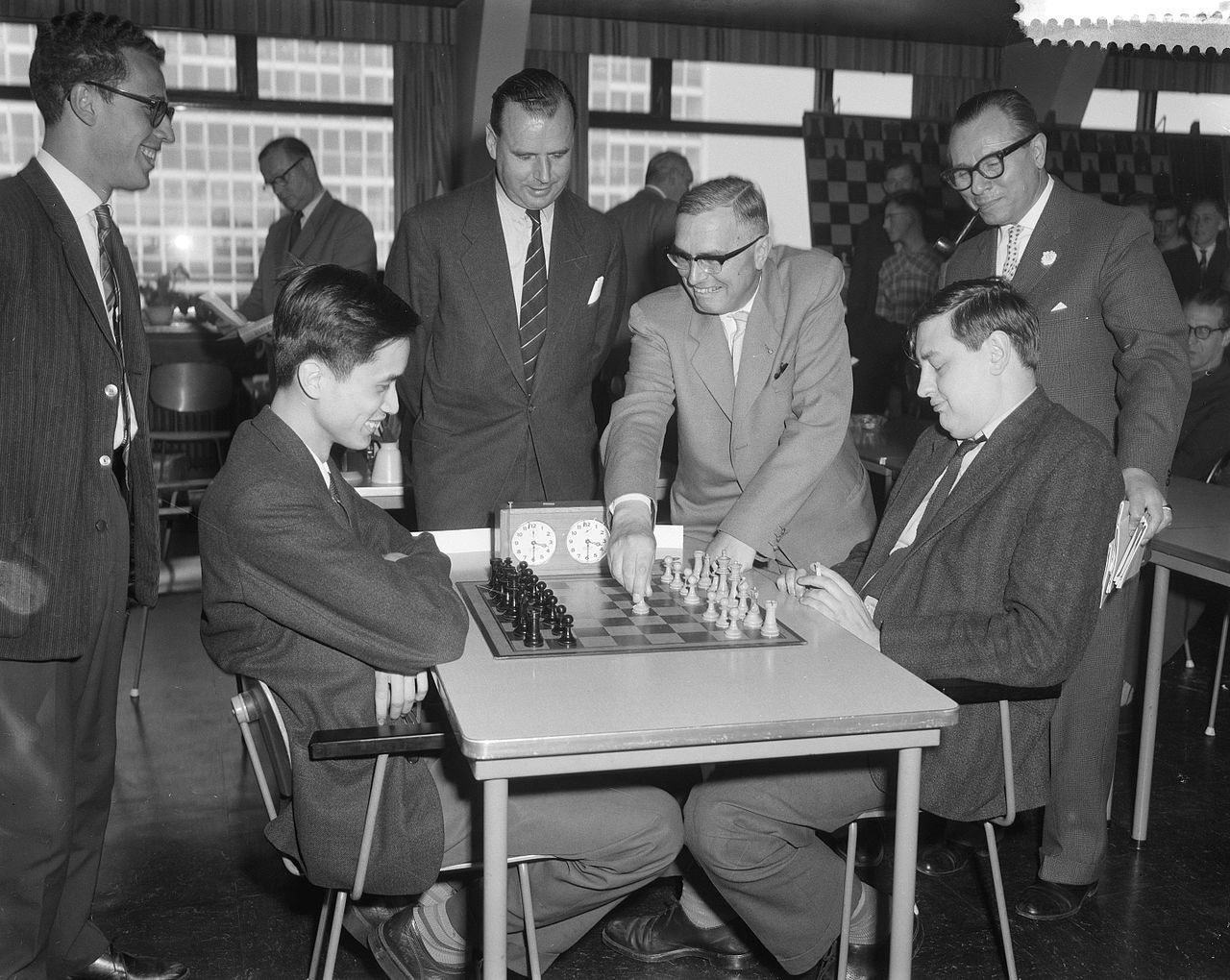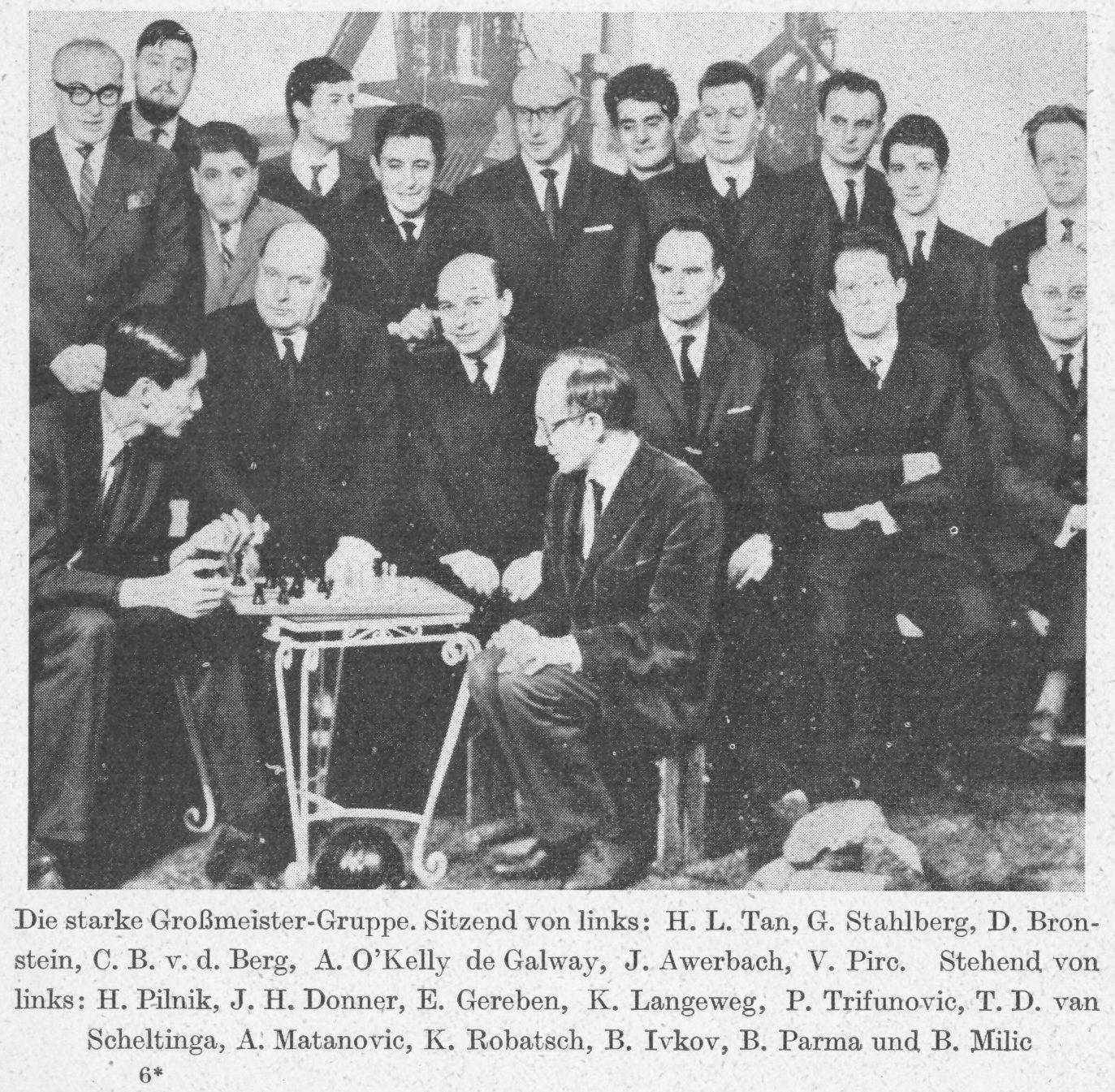The tragic story of Tan Hiong Liong
The tournaments in Beverwijk, and then Wijk aan Zee form one of the oldest tournament series in the world. What began as a company tournament at the Hoogovens steelworks in Ijmuiden grew after the Second World War into one of the most important and charismatic international tournaments. The best players in the world came and still come here. The rise to a world-class tournament began about the time the 1950s changed into the 1960s and the Mega Database helps to follow the history of the tournament.
The ChessBase Mega Database 2023 is the premiere chess database with over 9.75 million games from 1560 to 2022 in high quality.
Ten players took part in the 1960 tournament, and one of them was Tigran Petrosian, who celebrated his debut in the tournament series. Three years later Petrosian became World Champion and was the only Soviet player to take part. Later usually at least two Soviet grandmasters travelled together to foreign tournaments in the West, with an additional chaperone from the KGB, of course. Petrosian won the 1960 tournament together with Bent Larsen.
Tables of old tournaments often reveal interesting things - for example the names of unjustly forgotten players.
Who, for example, was Tan Hiong Liong, who played in the same tournament as Petrosian, Larsen and several other well-known grandmasters in 1960?
Tan Hiong Liong was born in 1938 in the Dutch East Indies, which became independent as Indonesia after the Second World War. He came from a bourgeois family and was brought up by a governess. He learned chess from his elder brother Tan Boen when he was five years old. At the age of 14, Tan Hiong Liong became a member of a chess club in Brandung (Indonesia) and improved his chess with the help of books by Max Euwe. In 1956 he came to the Netherlands with his family and studied actuarial mathematics in Amsterdam, but with only moderate success, as he concentrated more on his progress in chess. In 1958 Tan had the opportunity to play against Mikhail Botvinnik in a simul game and lost in 31 moves.
Tan Hiong Liong played in some local tournaments and competitions and became a member of the chess club VAS Amsterdam. There Hans Bouwmeester was to take care of the talented young man from Indonesia, who by then he was almost as good as his new coach.
In July 1960, Tan Hiong Liong played for the Dutch team in the Student World Championship in Leningrad and the team finished in the middle of the field. In round six, Tan managed to defeat Lubomir Kavalek, who was still playing for Czechoslovakia in 1960.
In October of the same year, Tan Hiong Liong played on board four for Indonesia at the Chess Olympiad in Leipzig. The Indonesian team reached the C-final and finished second behind the Philippines. Tan was the best player at board four with 16.5/20 and received an individual gold medal.
The following year, Tan won the national championships of the Netherlands and defeated Jan Hein Donner during the tournament, who was considered the strongest player in the country at that time. Fanny Heemskerk won the women's title, her tenth and last title.

Tan (on the left) and Donner, Euwe makes the first move

Tan Hiong Liong

Ludwig Rellstab, Jan Hein Donner, Tan Hiong Liong, Robert Hartoch, IBM Tournament 1962
In 1962, Tan shared first place with Moshe Czerniak at the IBM chess tournament in Amsterdam and was now invited to participate in the prestigious Hoogovens tournament due to his good results. The tournament was played in Beverwijk at that time and 18 players participated in the A tournament. Tan achieved a draw against Bronstein, Parma, and Pilnik, who finished in second, third, and fourth place respectively. Tan was able to win against Averbakh and Robatsch.
In the end, Tan finished twelfth with 7.5/17. The tournament winner was Jan Hein Donner, with an outstanding score of 12.5/17 against a strong field. Donner also took revenge for his defeat against Tan in the Dutch Championship two years earlier.
The Max Euwe Center recently published a photo of the tournament hall at the time on Twitter - the hall was a bit smaller than it is today.
In addition to the A-tournament, a B-tournament and a C-tournament were also played, in which a number of strong Dutch but also some Germans took part. In the C-tournament, the 66-year-old Friedrich Sämisch played, but finished last.
There was also a women's tournament with ten players, which was won by freshly crowned world champion Nona Gaprindshvili with 9 out of 9 in her first appearance as title holder abroad.
The Deutsche Schachzeitung, with Rudolf Teschner as editor, paid tribute to the tournament, which was played from January 8th to 27th, and Jan Hein Donner's victory in its March issue of 1963 under the title "The Thunder from Beverwijk", (the German word "Donner" means "Thunder") praised the winner and criticized Petar Trifunović's 16 draws, some of which were quite short. But in some games the Yugoslav was forced to fight for his half point.
In addition to a number of annotated games, the German Chess Magazine also published this nice group photo:

Due to his good results, FIDE awarded Tan Hiong Liong the title of International Master in 1963. Tan was the first player from Indonesia to be awarded this title. As a strong Go player, Tan Hiong Liong also held a Dan rank in Go.
However, the life of Tan Hiong Liong also had a different side. Since 1958, he struggled with mental health problems, had to cancel competitions in the Dutch league and also the planned participation in the Zonal tournament in Jakarta. He began to drink more alcohol than was tolerable. After repeatedly stealing bicycles, Tan was recorded by the Dutch police. He was admitted to a psychiatric clinic in Santpoort, where doctors suspected he had schizophrenia.
By the end of 1963, his parents came to the Netherlands and brought their son back to Indonesia, where Tan was further treated. He worked at his father's company, doing lighter tasks in the administration. When taking walks, he had to be accompanied by a servant, as there was always a risk that Tan would not find his way back.
Occasionally, Tan Hiong Liong still played chess, but only as a hobby though he occasionally visited his old chess club. In September 2009, at the age of 71, Tan Hiong Liong died after choking on his food.
Links



























